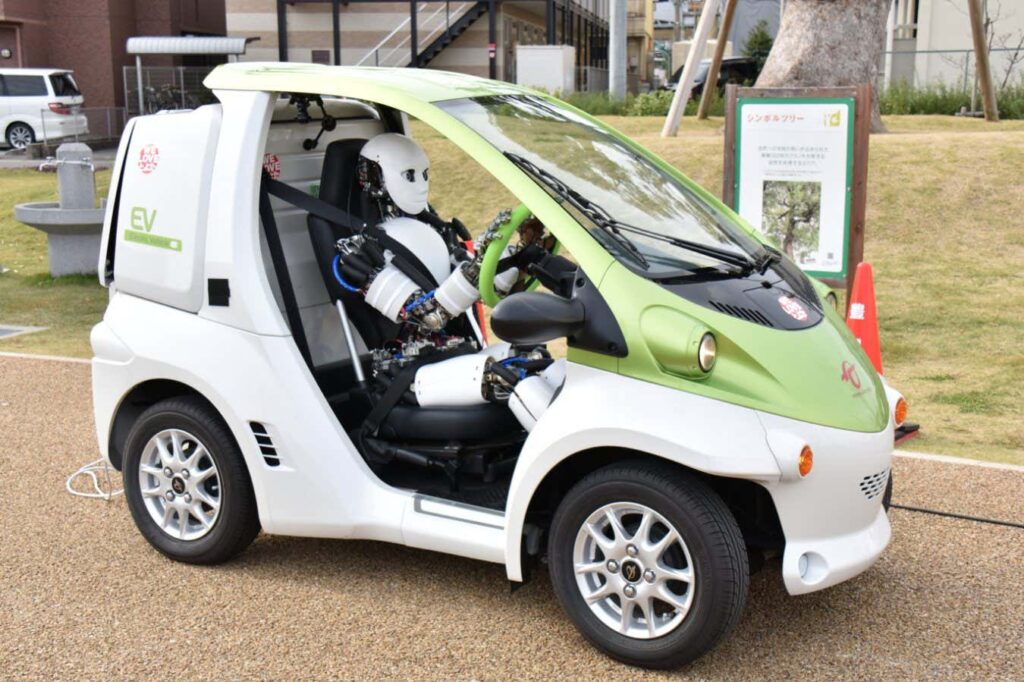Humanoid robots that can drive cars may one day be used as chauffeurs, but their creators acknowledge that this could be at least 50 years away.
Most driverless cars work completely differently than a human driver, using artificial intelligence and custom mechanical systems to directly control the steering wheel and pedals. This approach is much more efficient and simpler than using a humanoid robot to drive, but it needs to be customized for each specific car.
Takehito Kawarazuka of the University of Tokyo and his colleagues have developed a humanoid robot called Musashi that can drive a car just like a human. The robot has a human-like skeleton and muscles, cameras in its eyes, and force sensors in its limbs. An artificial intelligence system determines the movements required to drive the car and reacts to events such as a change in the color of traffic lights or a person cutting in front of the car.
Currently, robots can only perform a limited range of driving tasks, such as going straight or turning right, at speeds of around 5km per hour on non-public roads. “The pedal speed and car speed are not high, and the car handling is also not as fast as a human,” Kawarazuka said.
Musashi is a humanoid robot that operates cars just like a human would.
Kento Kawarazuka et al. 2024
But Kawarazuka hopes that as the system is improved it could be used in any car, which could be useful when humanoid robots are routinely produced. “I’m not looking 10 or 20 years out, I’m looking 50 or 100 years out,” he says.
“While this research may be of interest to those developing humanoid robots, it doesn’t tell us much about autonomous driving,” says Jack Stilgoe of University College London. “Self-driving cars don’t drive like humans, and they shouldn’t. Because the technology doesn’t have to rely on limbs and eyes, it can rely on digital maps and dedicated infrastructure to find other ways of moving around the world that are safer and more convenient.”
topic:



